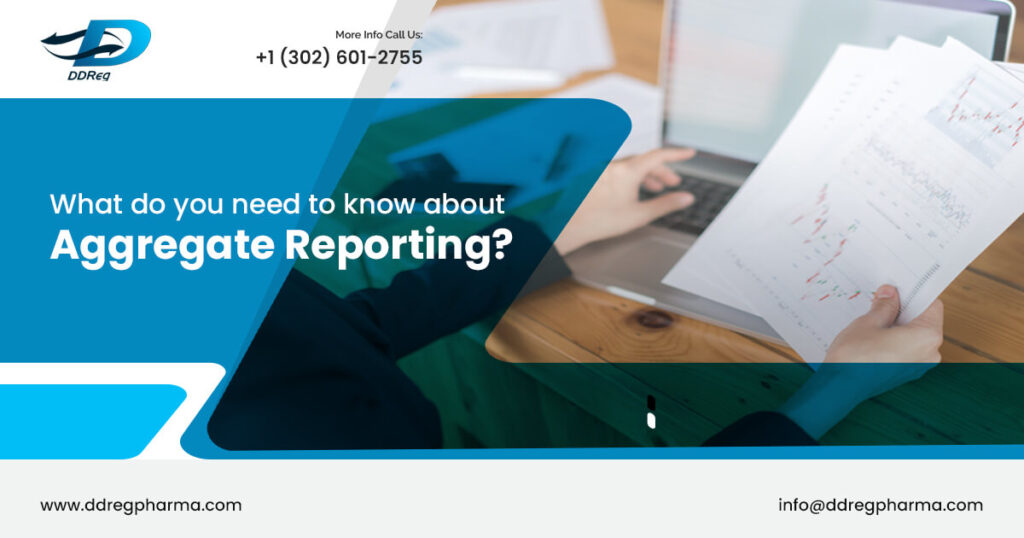Overview
Pharmacovigilance (PV) and post-market surveillance is important to capture the safety profile of a drug. The entire information on a benefit-risk ratio & safety profile is not known until or unless the drug has reached the market and been used in a larger, much wider population. Hence, a systematic approach in monitoring and evaluating the benefit-risk ratio for a product, and thus improving its safety profile is important post-market phase. Aggregate reporting systematically collect safety information on adverse drug reactions (ADRs) and submits it to regulatory authorities. Thus, these reports require meticulous analysis of the benefit-risk balance relative to patient safety.
What are the types of aggregate reports?
Aggregate reports services provide exceptional analysis of cumulative safety information from around the world for a given product which is necessary to properly understand its safety profile while also monitor its benefit-risks ratio. There are many types of reports depending on the market stage of the product-whether it is pre-market or post-market which include clinical study reports (CSR), Development Safety Update Report (DSUR), Periodic Safety Update Report(PSUR)/Periodic Benefit-Risk Evaluation Report (PBRER) and Periodic Adverse Drug Experience Report (PADER). Different regulatory agencies around the world mandate different aggregate reporting. For example, the US FDA requires a PADER whereas PSUR/PBRER is required by the EU, Canada, and Japan. The main differences between the PADER, PBRER, and PSUR are outlined below:
PADER
PADERs are reports on the individual case descriptions of serious cases and cases of events that may be of special interest, and is in accordance with the 21 CFR regulation 314.80. It consists of 5 sections that includes information and updates on cases in terms of their seriousness and unexpected/unlisted events. A PADER is submitted every quarterly for the first 3 years once the product approval has been received, and annually thereafter. The US FDA requires a separate PADER to be submitted for each type of formulation/product.
PBRER
PBRERs contain detailed information on the benefit-risk evaluation of product and is in accordance with the Good Pharmacovigilance Practice (GVP)- Module VII and ICH E2C guidelines. It contains 20 sections that include elaborate information on interval & cumulative drug exposure, regulatory updates, interventional & non-interventional clinical trials, benefit-risk assessment analysis and signal overviews. A PBRER must be submitted 6 months for the first 2 years and annually thereafter. Only one PBRER report is to be submitted with different dosage forms, indications, and formulations. However, exceptional cases may warrant for separate PBRERs.
PSUR
PSURs are developed in accordance with GVP- Module VII guidelines and are also a requirement by certain agencies. However, with the PBRER being a more elaborate version of the PSUR, most agencies prefer the PBRER over the PSUR. The PSUR consists of 10 sections that also include information on case descriptions, regulatory updates, and tabulations. PSUR submission timelines are the same as PBRERs.
Challenges in aggregate reports and solutions by DDReg
Some of the key challenges in aggregate reporting include maintaining regulatory compliance and quality with respect to submission timelines, identifying and using the right resources, manually tracking the report from authoring to submission stages, uniformity in update the report or subsequent report, large volumes of data that are prone to errors, ever-changing regulatory updates. As PV and the drug safety landscape becomes more regulated and complex, the need for skilled, knowledgeable, and subject matter expertise coupled with the ability to interact with multidisciplinary teams, complex data, and stringent timelines is the need. As the industry and allied organizations move further into the digital space, automation, and technology-driven solutions are tackling these key challenges to deliver more efficient workflow.
The medical and safety team at DDReg has decades of experience in preparing aggregate reports for regulatory agencies in over 130 countries. Additionally, they create and maintain report timetables and calendars using in-house tools to track and manage reports. Whether it is preparing line listings and tabulation, conducting meticulous medical review, submitting to authorities, and handling agency queries, DDReg’s aggregate reporting capabilities ensures reports are prepared per the most recent regulations and stick to the strict agency timelines.
Visit our Other post -: https://resource.ddregpharma.com/blogs/signal-management/

